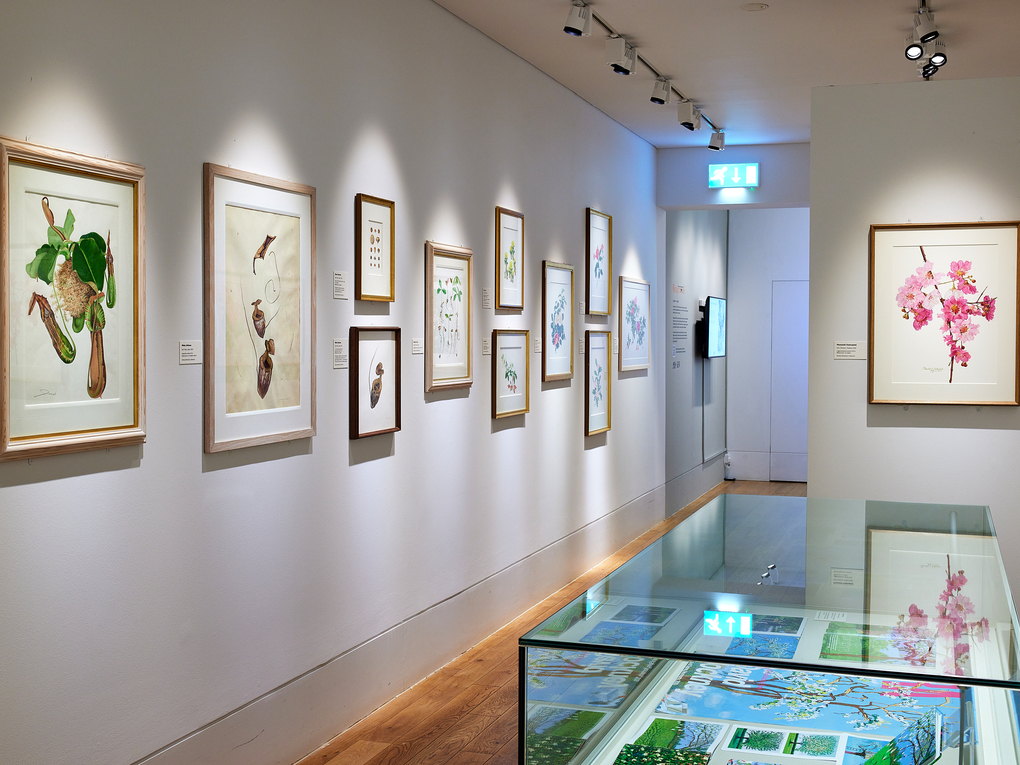about the gallery
It’s now over 10 years since Sir David Attenborough opened the Shirley Sherwood Gallery of Botanical Art at Kew, the world’s first dedicated display space. During that time, the gallery has held over 50 exhibitions, welcomed more than a million visitors and become the hub of the worldwide renaissance of botanical art.
So how did this all come about? After 20 years of collecting and exhibiting botanical art all over the world, Dr Sherwood realised she was running out of space. She needed somewhere to share her growing collection with the public and provide a protective environment for the works, many of which were fragile watercolours.
She already had a relationship with the Royal Botanic Gardens, Kew and they knew how strongly she felt about creating a place where old and new art could be safely displayed. So, when Kew asked if she’d be willing to support the construction of a dedicated gallery, she was thrilled.
In 2008, the gallery opened with the intention of displaying pieces from Dr Sherwood’s collection alongside works from Kew’s historical archive of over 200,000 botanical paintings. The collaboration has been a huge success, with the gallery hosting at least 5 exhibitions a year and showcasing a huge diversity of botanical art. Its walls have seen paintings by renowned artists such as Margaret Mee and Rory McEwen, collections from Brazil, Spain, Italy, South Africa, the US and Australia, Japanese woodblocks, graphite drawings of the UK’s oldest oak trees by Mark Frith, an immersive installation by British artist Rebecca Louise Law, and sculptures by Dale Chihuly and David Nash.
In 2018, the gallery collaborated in the first Worldwide Day of Botanical Art with artists holding workshops for the public and screens displaying over 1,000 works of art portraying native plants in 25 countries.
In the words of Dr Sherwood, “It has been so exciting and satisfying for me to hang works by artists from all over the world and to match older works from Kew’s superb archives with recent, innovative paintings from my own collection. Thousands of visitors come to the gallery every year and, for botanical artists around the world, it has become a place of pilgrimage.”
The gallery is a climate and lighting controlled building that perfectly complements the art on display. It has 300 square metres of exhibition space and is designed to be as flexible as possible with versatile display and lighting systems and a dedicated gift shop selling prints, postcards, books, jewellery and clothing.
Set between the Victoria Gate and Lion Gate inside Kew Gardens, just steps from the beautifully-restored Temperate House, it is connected to the Marianne North Gallery and is free to enter for all visitors to Kew Gardens.

